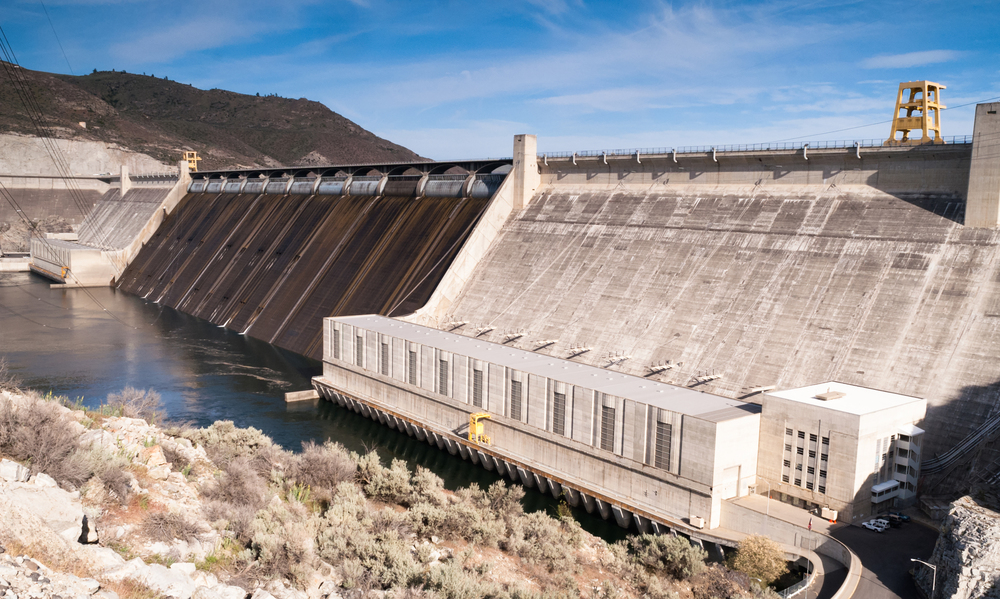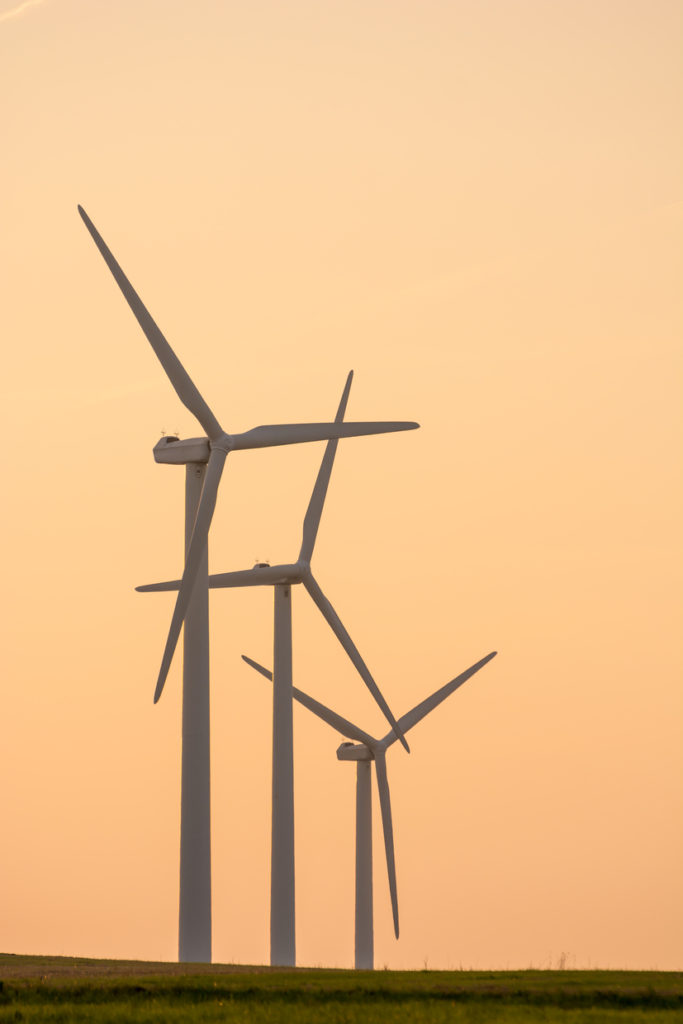- Renewable and Sustainable Energy Sources
- Clean and Environmentally Friendly with No Emissions
- Reliable and Predictable Power Generation
- Flexibility and Storage Capabilities
- Long Operational Lifespan
- Water Management Benefits
- Economic Advantages and Job Creation
Renewable and Sustainable Energy Sources

Hydroelectric energy, the mighty force harnessed from the water cycle, presents a renewable power source that never ceases to amaze. With every drop of rain and every flowing river, hydroelectric power can be generated endlessly, providing an infinite energy supply. Unlike fossil fuels, hydroelectric energy embraces sustainability, ensuring that our precious natural resources remain untouched. It’s a breathtaking dance with nature, where the power of water fuels our world without compromising its future.
Case Study
Located in the picturesque valley of Cascadia, the Swift River Hydroelectric Plant stands as a testament to the boundless potential of hydroelectric energy. With an average annual precipitation of over 150 inches, the region boasts a constant supply of water, making it an ideal candidate for hydroelectric power generation.
Harnessing the Power
The Swift River Hydroelectric Plant utilizes the force of the river to generate electricity, capitalizing on the continuous water flow. As the water cascades through the dam, it spins the massive turbines, converting kinetic energy into electrical power. This impressive feat demonstrates the ingenious way in which hydroelectric energy can be harnessed indefinitely, as long as nature provides the essential ingredient—water.
Endless Benefits
By relying on the water cycle, the Swift River Hydroelectric Plant guarantees a renewable energy source. Its operation doesn’t deplete natural resources, setting it apart from fossil fuel-based power generation. This sustainability factor has captivated the attention of environmentally conscious communities, positioning hydroelectric energy as a beacon of hope in the fight against climate change.
The Swift River Hydroelectric Plant serves as an inspiring case study, illustrating the remarkable advantages of hydroelectric energy as a renewable power source. By tapping into the never-ending water cycle, this plant exemplifies the sustainability and reliability of hydroelectric power generation.
Moreover, the economic advantages of the Swift River project are substantial. The construction and ongoing maintenance of the hydroelectric plant have provided employment opportunities for local communities, injecting vitality into the regional economy. The long-term operational lifespan of hydroelectric power plants, such as Swift River, ensures a stable and cost-effective energy supply for decades to come.
Clean and Environmentally Friendly with No Emissions
The pristine allure of hydroelectric energy lies in its inherent cleanliness and eco-friendliness, with an absence of emissions that plague traditional energy sources.

Consider the mighty Hoover Dam, an engineering marvel situated on the majestic Colorado River in the United States. By harnessing the power of this iconic waterway, the dam exemplifies the clean and environmentally friendly nature of hydroelectric energy.
As water rushes through the dam’s turbines, the immense kinetic energy is converted into a steady flow of electricity without the release of harmful emissions. No smokestacks belch out toxic gases or pollute the air we breathe. Hydroelectric power stands tall as an ally in the battle against climate change, offering a genuine solution to reduce our carbon footprint and mitigate environmental degradation.
 Hydroelectric energy’s minimal environmental impact extends beyond the absence of emissions. By eliminating the need for fossil fuel combustion, it reduces air pollution, minimizing respiratory diseases and improving overall air quality. The absence of toxic byproducts like sulfur dioxide, nitrogen oxides, and particulate matter ensures that nearby ecosystems remain unpolluted, safeguarding biodiversity and preserving delicate habitats.
Hydroelectric energy’s minimal environmental impact extends beyond the absence of emissions. By eliminating the need for fossil fuel combustion, it reduces air pollution, minimizing respiratory diseases and improving overall air quality. The absence of toxic byproducts like sulfur dioxide, nitrogen oxides, and particulate matter ensures that nearby ecosystems remain unpolluted, safeguarding biodiversity and preserving delicate habitats.
Hydroelectric power’s environmental benefits extend beyond the power plant itself. The construction of dams can create reservoirs, which provide additional ecological advantages. These reservoirs often become sanctuaries for various aquatic species, fostering vibrant fish habitats and supporting biodiversity conservation. Additionally, the regulated flow of water from hydroelectric projects can mitigate the risk of floods downstream, offering protection to communities and enhancing water management practices.
In a world yearning for cleaner energy alternatives, hydroelectric power shines as a beacon of hope. Its clean and environmentally friendly nature, coupled with the absence of emissions, ensures a sustainable energy source that embraces the well-being of our planet and future generations.
Reliable and Predictable Power Generation
Hydroelectric energy boasts a remarkable advantage: reliable and predictable power generation. Unlike other renewable energy sources like solar and wind, which are subject to weather fluctuations, hydroelectric power provides a consistent and dependable supply of electricity.

The flow of water in rivers is generally consistent and predictable, allowing hydroelectric plants to generate electricity continuously. This stability enables better planning and management of energy resources, ensuring a steady supply of power to meet the demands of homes, industries, and businesses.
Consider the case of the Itaipu Dam, situated on the border between Brazil and Paraguay. This colossal hydroelectric project harnesses the mighty force of the Paraná River, showcasing the reliability and predictability of hydroelectric power generation.
Regardless of the time of day or season, hydroelectric power plants can reliably produce electricity. They offer a baseload capacity, meaning they can consistently generate a significant amount of power. This feature is particularly valuable as it provides a stable foundation for a balanced and reliable electrical grid.
 Hydroelectric power’s predictability is also instrumental in integrating intermittent renewable energy sources into the grid. Solar and wind power, while abundant and environmentally friendly, can be variable due to weather conditions. However, by combining these intermittent sources with hydroelectric power, a well-balanced and reliable energy system can be achieved. Hydroelectric plants can ramp up or down their electricity output quickly, compensating for fluctuations in solar and wind power generation and maintaining grid stability.
Hydroelectric power’s predictability is also instrumental in integrating intermittent renewable energy sources into the grid. Solar and wind power, while abundant and environmentally friendly, can be variable due to weather conditions. However, by combining these intermittent sources with hydroelectric power, a well-balanced and reliable energy system can be achieved. Hydroelectric plants can ramp up or down their electricity output quickly, compensating for fluctuations in solar and wind power generation and maintaining grid stability.
The reliability and predictability of hydroelectric power make it a trusted cornerstone of the global energy mix. Its ability to provide continuous and consistent electricity ensures that communities have access to power whenever it is needed. It offers a reliable backbone for meeting the increasing energy demands of modern society while minimizing the risks associated with intermittent power sources.
Flexibility and Storage Capabilities
Flexibility and storage capabilities are significant advantages of hydroelectric energy, making it a versatile and adaptable source of power. Unlike some other renewable energy sources, hydroelectric power offers the ability to adjust electricity generation according to demand and store energy for later use.
Hydroelectric plants can quickly respond to changes in electricity demand by adjusting the flow of water through the turbines. This flexibility allows for efficient load management and ensures a stable supply of electricity, even during peak demand periods. The ability to ramp up or down power generation promptly is crucial for maintaining grid stability and meeting fluctuating energy needs.
Furthermore, certain hydroelectric systems have storage capabilities through the use of reservoirs. These reservoirs act as giant batteries, storing water when electricity demand is low and releasing it during times of high demand. By regulating water flow, hydroelectric plants with storage capacity can provide a constant and steady supply of electricity, helping to balance the grid and ensure a reliable power supply.
 The storage capabilities of hydroelectric energy are particularly valuable when integrating intermittent renewable energy sources like solar and wind power into the grid. Excess electricity generated from intermittent sources can be used to pump water into the reservoirs, effectively storing energy. When solar or wind power generation decreases, hydroelectric plants can release the stored water, generating electricity to compensate for the shortfall. This synergy between hydroelectric power and other renewables enhances grid stability and supports the effective utilization of renewable energy resources.
The storage capabilities of hydroelectric energy are particularly valuable when integrating intermittent renewable energy sources like solar and wind power into the grid. Excess electricity generated from intermittent sources can be used to pump water into the reservoirs, effectively storing energy. When solar or wind power generation decreases, hydroelectric plants can release the stored water, generating electricity to compensate for the shortfall. This synergy between hydroelectric power and other renewables enhances grid stability and supports the effective utilization of renewable energy resources.
The flexibility and storage capabilities of hydroelectric energy make it a valuable asset in the energy transition. It enables the integration of variable renewable energy sources, promotes grid reliability, and enhances overall energy system resilience. The ability to adjust power generation and store energy ensures a reliable supply of electricity, contributing to a more efficient and sustainable energy infrastructure.
Long Operational Lifespan
One of the notable advantages of hydroelectric energy is its long operational lifespan, which sets it apart from many other forms of power generation. Hydroelectric power plants are built to last, providing reliable electricity for several decades.
Hydroelectric projects, such as the Grand Coulee Dam in the United States, are designed and constructed with longevity in mind. With proper maintenance and upgrades, hydroelectric power plants can operate efficiently for 50 years or more. This extended lifespan ensures a stable and consistent energy supply, making hydroelectric power a reliable investment for long-term energy planning.

The durability of hydroelectric infrastructure contributes to its economic viability. Once the initial construction is complete, hydroelectric power plants have relatively low operational costs compared to other forms of power generation. This cost-effectiveness over the long term makes hydroelectric energy an attractive option for energy providers and consumers alike.
The long lifespan of hydroelectric facilities minimizes the need for frequent replacements or significant infrastructure changes. This stability helps avoid disruptions in electricity generation and provides a steady power supply to meet the growing energy demands of society.
The extended operational lifespan of hydroelectric power plants also brings environmental benefits. It reduces the need for frequent construction activities, which can cause ecological disturbances and impact natural habitats. By avoiding frequent replacements, hydroelectric energy minimizes the carbon footprint associated with infrastructure development.
Water Management Benefits

Hydroelectric energy not only provides a clean and renewable source of electricity but also offers significant water management benefits. As the world seeks sustainable solutions for energy and water resource management, hydroelectric power emerges as a multifaceted and impactful option.
One of the key benefits of hydroelectric projects is their ability to regulate water flow. Dams and reservoirs play a crucial role in controlling the release of water downstream, mitigating the risk of floods during periods of heavy rainfall. This not only safeguards communities and infrastructure but also protects valuable agricultural land from the devastating impact of inundation.
Beyond flood control, hydroelectric dams and reservoirs contribute to effective water resource management. By storing water during wet seasons and releasing it during dry periods, hydroelectric plants ensure a reliable supply of water for irrigation, drinking water, and industrial use. This enhances food security, supports economic activities, and provides communities with access to clean and vital water resources.
The creation of reservoirs for hydroelectric power generation also presents opportunities for ecosystem support. These reservoirs serve as new habitats, promoting biodiversity conservation and habitat restoration. Aquatic species thrive in these reservoirs, supporting fish populations and improving overall ecosystem health. Hydroelectric power thus fosters environmental sustainability and contributes to the preservation of natural ecosystems.
 Moreover, the reservoirs formed by hydroelectric projects offer recreational opportunities for local communities and visitors alike. Boating, fishing, swimming, and other water-based activities can be enjoyed in these scenic reservoirs. The allure of these natural surroundings attracts tourists, bolstering local economies and promoting sustainable tourism.
Moreover, the reservoirs formed by hydroelectric projects offer recreational opportunities for local communities and visitors alike. Boating, fishing, swimming, and other water-based activities can be enjoyed in these scenic reservoirs. The allure of these natural surroundings attracts tourists, bolstering local economies and promoting sustainable tourism.
In the face of climate change, hydroelectric energy plays a vital role in water management and adaptation. By regulating water flow, hydroelectric projects help mitigate the impacts of droughts, ensure water availability during dry spells, and provide a buffer against water scarcity in affected regions. This adaptive capability strengthens resilience in the face of changing water availability and extreme weather events.
Harnessing the power of water through hydroelectric energy not only generates clean electricity but also offers invaluable water management benefits. From flood control to water supply, ecosystem support, recreation, and climate change adaptation, hydroelectric power represents a holistic and sustainable approach to water and energy management. Embracing hydroelectric energy ensures a harmonious balance between meeting our energy needs and preserving our precious water resources for generations to come.
Economic Advantages and Job Creation
Hydroelectric energy is not just a solution for environmental sustainability; it also brings about significant economic advantages, fostering job creation, revenue generation, and community development. Let’s dive deeper into the multitude of benefits that hydroelectric projects offer to local economies and the broader society.
One of the primary economic advantages of hydroelectric energy lies in the job creation potential it presents. The development and operation of hydroelectric power plants require a diverse range of skilled professionals, including engineers, construction workers, project managers, technicians, and maintenance personnel. These projects become sources of employment during the construction phase, stimulating local economies by providing job opportunities to a wide array of individuals. Furthermore, the ongoing operation and maintenance of hydroelectric power plants create long-term employment prospects, supporting a specialized workforce and contributing to the stability of local job markets.
The construction and development of hydroelectric projects inject significant capital into the economy. These large-scale endeavors involve extensive infrastructure development, such as dams, reservoirs, and powerhouses, which require the procurement of materials, equipment, and services from various industries. This generates economic activity and revenue for suppliers, manufacturers, and service providers, stimulating ancillary industries and supporting local businesses.
Hydroelectric power plants become revenue-generating assets for governments and energy companies. The sale of electricity generated by hydroelectric projects generates income, contributing to the overall economic growth of the region or country. Governments can allocate these funds to public infrastructure projects, education, healthcare, and other social programs, benefiting local communities and improving the standard of living for citizens.
Moreover, hydroelectric projects often lead to community development initiatives. Power companies invest in the construction of schools, healthcare facilities, and public infrastructure, improving the quality of life for residents. These social investments have a positive multiplier effect on the economy, creating a conducive environment for sustained economic growth and prosperity.
Additionally, hydroelectric reservoirs and dams often attract tourists due to their scenic beauty and recreational opportunities. The influx of visitors stimulates the local tourism industry, generating additional revenue and employment opportunities in hospitality, leisure, and related sectors. This creates a ripple effect on the economy, boosting businesses and supporting local entrepreneurship.

Construction and Development
The construction of hydroelectric power plants involves extensive infrastructure development, including dams, reservoirs, and powerhouses. These projects require a skilled workforce and create a multitude of jobs in engineering, construction, and project management. Local communities benefit from increased employment opportunities and economic growth during the construction phase.
Operation and Maintenance
Once operational, hydroelectric power plants require ongoing maintenance, monitoring, and management. This ensures optimal performance and longevity. Skilled technicians, engineers, and maintenance workers are needed to operate and maintain the turbines, generators, control systems, and other components of the power plant. These positions provide long-term employment opportunities and support a specialized workforce.
Ancillary Industries and Services
Hydroelectric projects spur the growth of ancillary industries and services in their vicinity. This includes businesses involved in equipment manufacturing, transportation, logistics, and technical support. Local suppliers and service providers benefit from the demand for materials, spare parts, and specialized services related to the operation and maintenance of the power plant.
Energy Sector Revenue
 The revenue generated by hydroelectric power plants through the sale of electricity plays a crucial role in driving economic growth and improving the standard of living in the region or country where they are located. This steady income stream provides governments with an opportunity to allocate funds strategically to benefit local communities in various ways.
The revenue generated by hydroelectric power plants through the sale of electricity plays a crucial role in driving economic growth and improving the standard of living in the region or country where they are located. This steady income stream provides governments with an opportunity to allocate funds strategically to benefit local communities in various ways.
One significant area where hydroelectric revenue can be allocated is public infrastructure. The funds can be used to build and maintain roads, bridges, and other essential transportation infrastructure, enhancing connectivity within the region and facilitating trade and commerce. Improved infrastructure not only boosts economic activity but also increases accessibility to remote areas, opening up new opportunities for businesses and residents.
Education is another vital sector that can benefit from the revenue generated by hydroelectric power plants. Governments can invest in the construction and improvement of schools, colleges, and universities, ensuring that the local population has access to quality education. Scholarships, grants, and educational programs can be funded to support students in pursuing higher education and acquiring the skills necessary for the job market. A well-educated workforce contributes to a thriving economy and creates a pathway for social mobility and economic empowerment.
Healthcare is yet another area that can be positively impacted by hydroelectric revenue. Governments can allocate funds to improve healthcare infrastructure, build hospitals, clinics, and healthcare centers, and equip them with modern medical facilities and technologies. This investment enhances access to quality healthcare services, improves health outcomes, and enhances the overall well-being of the population.
The revenue generated by hydroelectric power plants can also be utilized for social programs that directly benefit local communities. This includes initiatives aimed at poverty alleviation, social welfare programs, and support for vulnerable groups such as the elderly, children, and people with disabilities. By providing financial assistance and support, governments can enhance social cohesion, reduce inequality, and uplift the overall standard of living.
Community Development
The presence of hydroelectric projects often leads to community development initiatives. Power companies may invest in community projects, including schools, healthcare facilities, and public infrastructure, improving the quality of life for local residents. This social investment enhances community well-being and fosters sustainable development in the region.
Tourism and Recreation
Hydroelectric reservoirs and dams have long been known for their scenic beauty and natural allure, captivating tourists from all over the world. These man-made wonders not only serve as vital sources of renewable energy but also offer a range of recreational opportunities for visitors to enjoy. This influx of tourists has a profound impact on the local tourism industry, fostering economic growth by generating additional revenue and creating employment opportunities in the hospitality, leisure, and related sectors.
The scenic beauty of hydroelectric reservoirs and dams is often breathtaking, with vast expanses of calm water surrounded by lush greenery and majestic mountains. Tourists are drawn to these locations to immerse themselves in the tranquility of nature, basking in the serenity and marveling at the engineering marvels that created these landscapes. The picturesque views provide a perfect backdrop for various outdoor activities such as boating, fishing, hiking, and wildlife observation, making them popular destinations for adventure seekers and nature enthusiasts alike.
Are you ready to make a positive impact on the environment while benefiting from reliable and cost-effective electricity? It’s time to consider the advantages of hydroelectric energy and make the switch to this clean and renewable power source.

